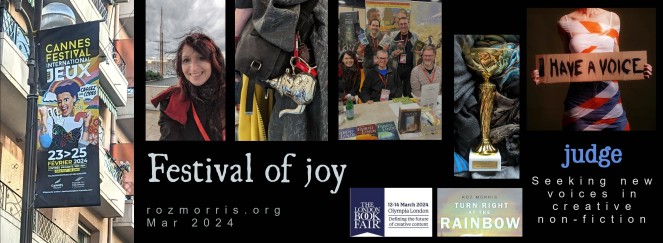I’ve seen dialogue tags discussed a few times recently on writing forums.
The discussion goes like this.
‘When writing a piece of dialogue, do you need synonyms for “said”? Doesn’t it get boring for the reader? What about words with a bit more expression, such as exclaimed or spat or shouted or yelled?’
‘Noooo,’ comes the reply, overwhelmingly. ‘Only use “said”.’
I agree, mostly.
I also disagree.
Yes, ‘said’ will do most of the time. It’s almost invisible to the reader, so it doesn’t get boring. You’re using it merely to convey who’s talking. And if you feel you’re overusing ‘said’, consider doing without it. In a conversation between two people, the order of speakers might be obvious by the give and take of the paragraphs. There are also other ways to slip in a clue to who’s talking. You can use actions. Eg ‘Molly began to peel the orange.’
On the subject of actions, don’t forget that other things are going on in the scene as well. A common problem with dialogue is that writers get obsessed by the characters’ verbalisations, so they forget to include other sensory details. The rest of the scene disappears, as if the narrative has become a radio play.
The solution? Write the dialogue, then go back and add other stuff. That’s what most of us have to do.
So remember your characters are also sitting or standing or walking or driving. All of these non-spoken ingredients can help you establish who’s talking.
Don’t forget, also, that any conversation will have reactions. These reactions might be companionable, hostile, surprised, shocked. You can show all this. You can also show reactions in characters’ thoughts. (‘She expected Sanjay would refuse outright. Instead he smiled.’)
Indeed, don’t forget to show reactions – this is another common problem with novice manuscripts. Get inventive with facial expressions, wobbles in the tone of voice, laughter, strange looks, uncomfortable pauses. So you have a huge repertoire to tell the reader who’s speaking, without getting repetitive. It will punctuate and enliven the scene too. And I haven’t even mentioned subtext, the important things that are left unsaid.
What if a character says something with special emphasis? Is that a case where you’re permitted a synonym for ‘said’?
Perhaps. Sometimes you can get away with ‘Lawrence whispered.’ If, up until then, you’ve been conservative with your dialogue tags, that ‘whispered’ will have impact.
Notice that; the synonym will have impact. Because it is very noticeable.
That’s the problem with synonyms for ‘said’. While ‘said’ is invisible, ‘spluttered’, ‘scoffed’, ‘asserted’, ‘demanded’, ‘barked’ are not. Why is that?
In everything we write, we’re steering the reader. Storytellers are always, always highlighting things for the reader to notice, guiding their attention, manipulating their expectations and feelings. Most of the time, we do it below the water line – with hidden structures, themes, atmospheres and parallels. If we make this visible, the reader feels more steered – and that’s why synonyms for ‘said’ are so very noticeable to readers. They tell the reader what to think.
So do adverbs in dialogue, such as “he asked hesitantly” or ‘he queried mildly”?’
Most of the time, you want the characters’ own words and actions to express everything. The wonderfully neutral ‘said’ allows that. In most dialogue scenes, the tag is there to tell you who, not how. You tell the reader how – in other ways.
So here’s the principle. Put the life into the characters and their words and actions and emotions. Don’t strongarm the reader to see it your way. Let them see it for themselves.
This holds for most dialogue situations. Except.
There’s one use of dialogue tags that’s missing from the discussions I’ve seen recently.
What if your narration is deliberately not neutral?
If you have a book where the narrative voice is commenting on the dialogue scene, for instance in a comic or first-person novel or memoir, elaborate dialogue tags might be very useful. This is because the ‘narrator’ is not transparent. They are overtly presenting the action.
The more you use synonyms for ‘said’, the more you impose a tone on the text and tell the reader what to think. If your narrator has a strong flavour of their own, you might use dialogue tags because they’re a form of comment, and a strongly flavoured narrator will comment on everything. (However, if you’re ‘commenting’ like this in dialogue, you must do it in other scenes too or the tone will look uneven.)
So intrusive tags can – sometimes – be exactly what you need.
There’s a lot more about writing in my Nail Your Novel books – find them here. If you’re curious about my own work, find novels here and my travel memoir here. And if you’re curious about what’s going on at my own writing desk, here’s my latest newsletter. You can subscribe to future updates here.




I’d also like to make a case for reported speech. Now that “make a scene of it” is so in vogue, writers don’t appreciate how effective it can be.
Oh definitely. Reported speech can be very powerful, especially when the characters’ reactions are more important than the thing being said.
I love this discussion. Thank you.
Too many novice writers are looking for “the rules” of writing. And people can get distracted by rule A being right, or rule B being right.
I agree with everything you’ve said here, especially tags being unnecessary during a two-way conversation for several conversations. But the author must be cognisant of a danger of the reader “losing track” of who’s talking. And using emotional responses to convey both who is talking, as well as their feelings,
e.g. Sarah shrugged. “I don’t really care.”
Also usage of new lines for new character dialogue needs to be consistent.
And thank you, Gerald, for commenting! Yes, we mustn’t confuse the reader – it’s tedious to have to count back through the paragraphs to find the last label. But there’s so much more available to us than ‘saids’, to keep the reader in the scene and to add to it.
Good point about the separate paragraphs. I tend to assume everyone knows that…
Thanks for a very thoughtful post. One thing I have noticed: while ‘said’ is invisible while a person reads, it can be jarring when the book is converted to audio and the narrator is performing a voice.
That’s such an interesting point, Reyna. I don’t remember it being a problem with my own audiobooks, but part of my proofing process is to read the manuscript out loud – so I might have caught any overuse in that stage. Good point.
Last night I was writing a crowd scene at a wedding reception. The owner of a local radio station was having a conversation with one of her employees. The owner was having quite a few words with the bride. When just two people are “talking”, is it still necessary for dialogue tags to be used. I thought the comments and/or comments alone would identify just who is speaking.
Hi Tom! Just use common sense. As I described in my post, there are many ways to keep the reader gently orientated about who’s talking.
This is bang on, Roz!
Gerald Durrell is a perfect example of the “commenting” narrator — a strongly flavoured, distinctive voice writing a comic memoir. He makes elaborate use of dialogue tags and (especially) adverbs to describe speech — as well as indirect speech, as another commenter mentions above — and the effect is hilarious and highly engaging for the reader. I’ve often mused over the fact that Durrell breaks all the writerly conventions when it comes to dialogue, yet seems to get away with it and you’ve explained perfectly why it works.
Kate – lovely to see you here! And I love Gerald Durrell – for that very reason. There is such vigour and enjoyment in his voice. I read My Family And Other Animals at school and I used to reread paragraphs, over and over, trying to figure out how he did it.